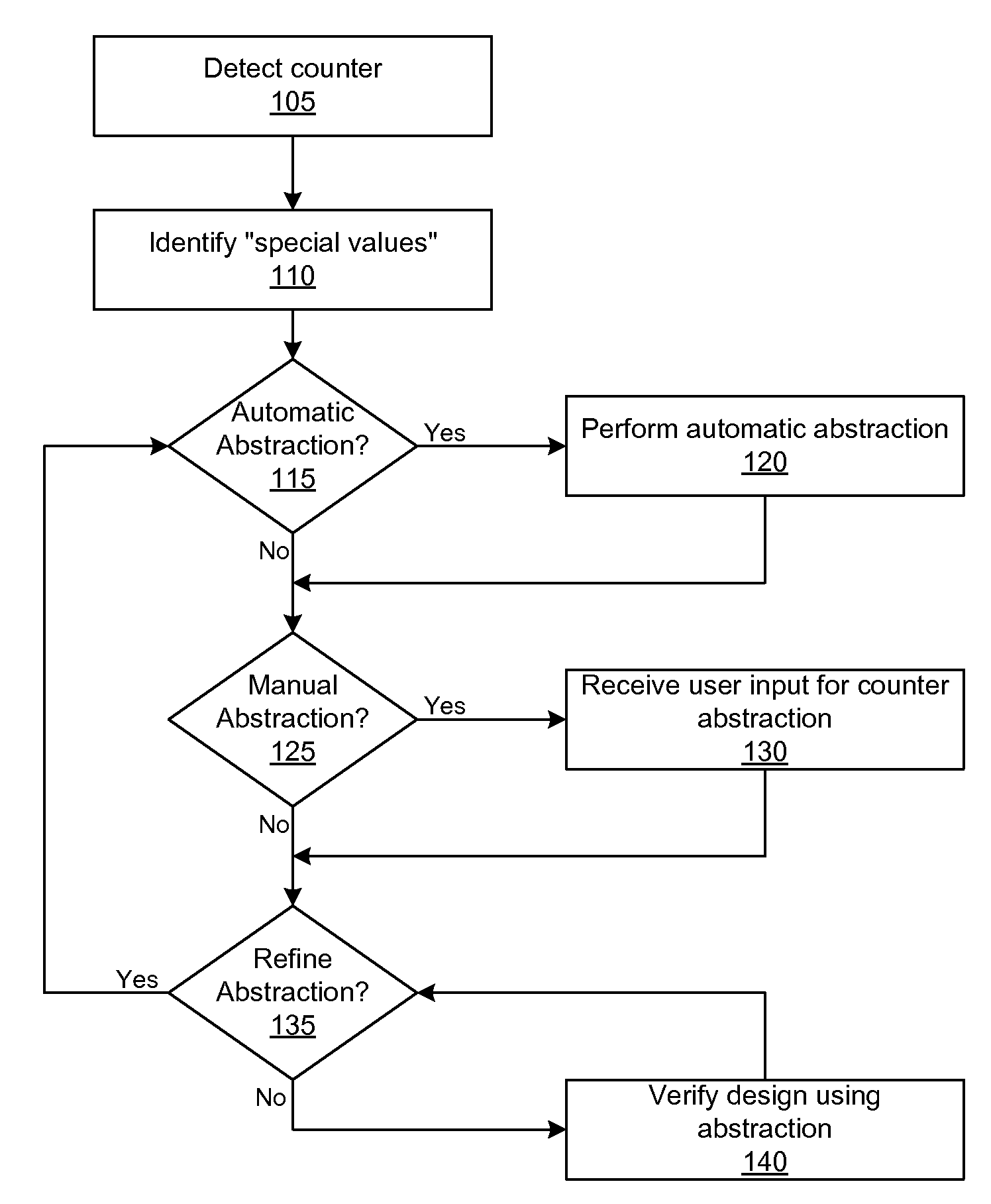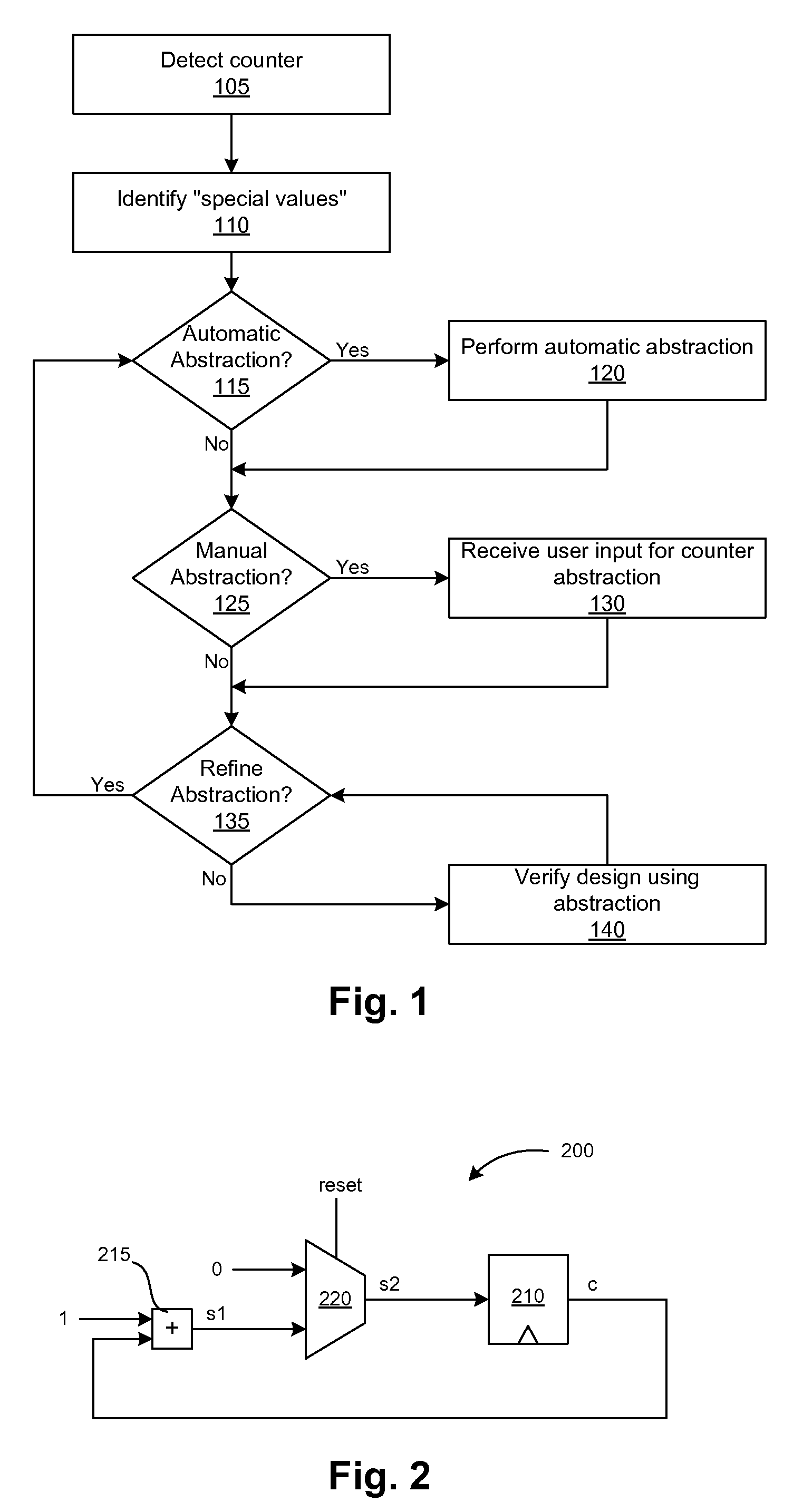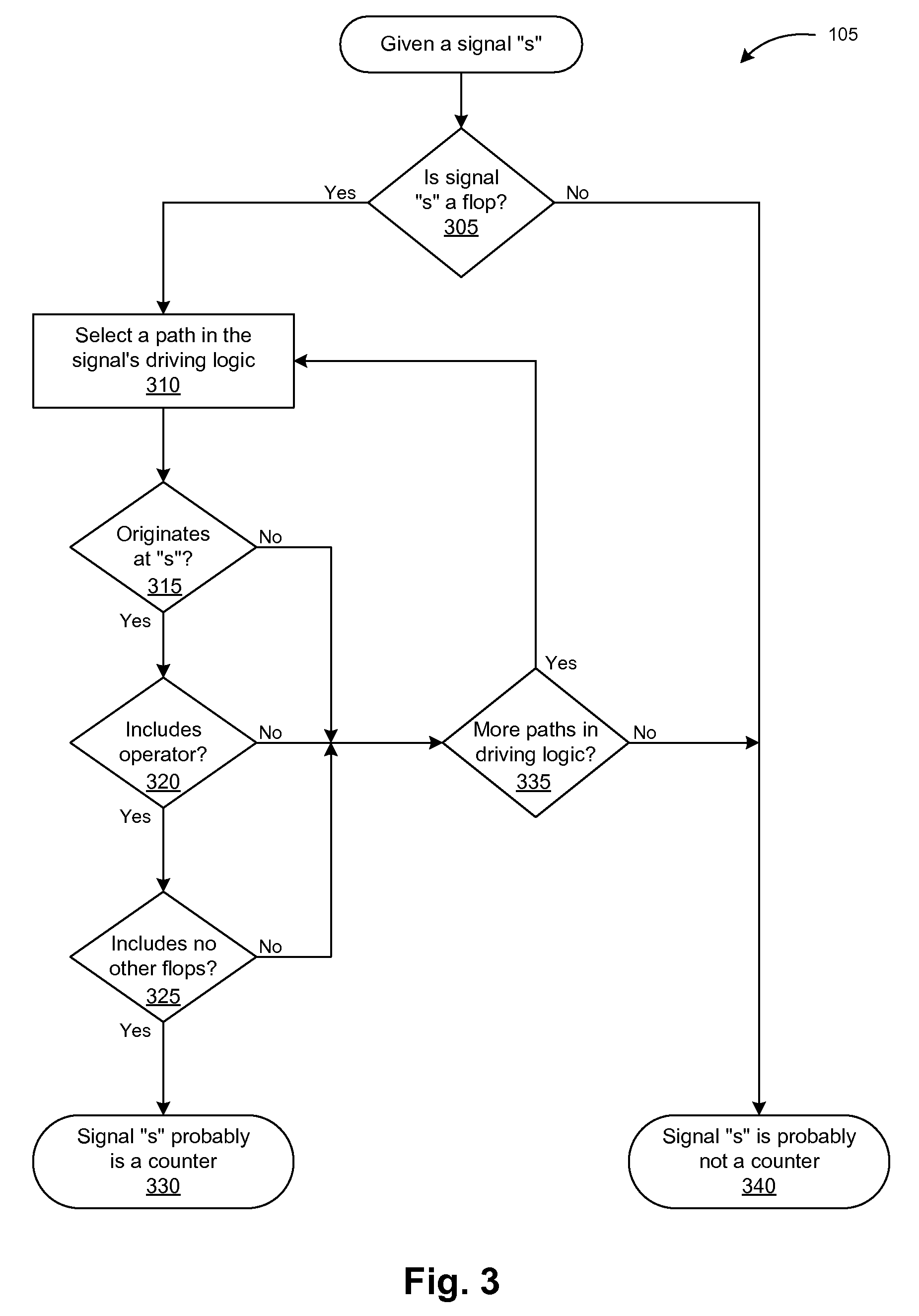Managing formal verification complexity of designs with multiple related counters
a counter and design technology, applied in the field of functional verification of digital designs, can solve the problems of consuming approximately 70-80% of the total time and resources, and increasing complexity of integrated circuits
- Summary
- Abstract
- Description
- Claims
- Application Information
AI Technical Summary
Benefits of technology
Problems solved by technology
Method used
Image
Examples
Embodiment Construction
[0032]To perform functional verification of a digital design that includes one or more counters, a formal verification system includes a counter abstraction tool. The counter abstraction tool detects counters in a circuit design and extracts appropriate information about the detected counters. Using the information extracted from the circuit design, the tool automatically performs abstraction of the counters, guides a user in manually configuring the appropriate abstraction for the counters, or performs a combination of automatic and manual counter abstraction. The abstraction tool then passes the abstraction of the counters to the verification software, which uses the abstraction for the counters rather than the code that implements them to simplify the verification process.
[0033]FIG. 1 illustrates a process flow for an embodiment of the counter abstraction process. When presented with a circuit design or a portion of a design, the tool analyzes the design—usually in the form of HD...
PUM
 Login to View More
Login to View More Abstract
Description
Claims
Application Information
 Login to View More
Login to View More - R&D
- Intellectual Property
- Life Sciences
- Materials
- Tech Scout
- Unparalleled Data Quality
- Higher Quality Content
- 60% Fewer Hallucinations
Browse by: Latest US Patents, China's latest patents, Technical Efficacy Thesaurus, Application Domain, Technology Topic, Popular Technical Reports.
© 2025 PatSnap. All rights reserved.Legal|Privacy policy|Modern Slavery Act Transparency Statement|Sitemap|About US| Contact US: help@patsnap.com



